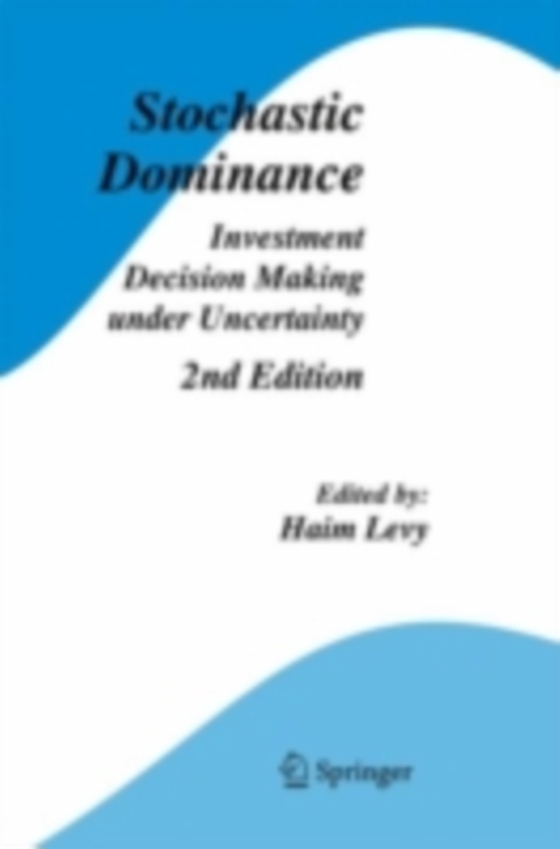
Stochastic Dominance e-bog
2190,77 DKK
(inkl. moms 2738,46 DKK)
This second edition of Stochastic Dominance is devoted to investment decision- making under uncertainty. The book covers four basic approaches to this process: a) The stochastic dominance (SD) approach, developed on the foundation of von-Neumann and Morgenstem^ expected utiHty paradigm. b) The mean-variance approach developed by Markowitz^ on the foundation of von-Neumann and Morgenstern's expe...
E-bog
2190,77 DKK
Forlag
Springer
Udgivet
25 august 2006
Genrer
Microeconomics
Sprog
English
Format
pdf
Beskyttelse
LCP
ISBN
9780387293110
This second edition of Stochastic Dominance is devoted to investment decision- making under uncertainty. The book covers four basic approaches to this process: a) The stochastic dominance (SD) approach, developed on the foundation of von-Neumann and Morgenstem^ expected utiHty paradigm. b) The mean-variance approach developed by Markowitz^ on the foundation of von-Neumann and Morgenstern's expected utility or simply on the assumption of a utility function based on mean and variance. c) The "e;almost"e; stochastic dominance (ASD) rules and the "e;almost"e; me- variance rule (AMV). No matter whether one employs objective or subjective probabilities, the common stochastic dominance criteria and the mean variance rule may lead to paradoxes: they are unable to rank prospect A w^hich yields $1 with a probability of 0.01 and a million dollars with probability of 0.99, and prospect B which yields $2 with certainty. This is an absurdity as in any sample of subjects one takes, 100% of subjects choose A. The "e;almost"e; stochastic dominance criteria and "e;almost"e; mean variance rule, which have been recently been developed by Leshno and Levy in 2002^, suggest a remedy to such paradoxes.
 Dansk
Dansk

